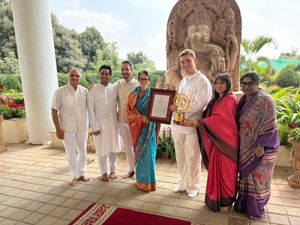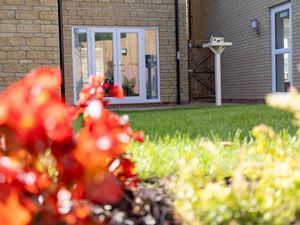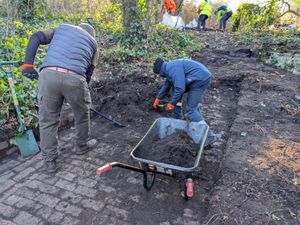Parts of Lichfield Cathedral 'at risk of collapse' - as grant for repairs is approved
Lichfield Cathedral is to receive a grant of more than a quarter of a million pounds to help secure part of the building “at risk of collapse”.
The £264,404 grant from the Government’s Culture Recovery Fund will help to address urgent masonry repairs to the flying buttresses (supporting arches) on the south side of the 900-year-old cathedral.
One flying buttress “has turned significantly” on its axis and the other five are deteriorating, affecting its south side. The repairs are “essential” to ensure the safety of the building and its continued ability to open for worshippers, visitors and the local community in the future.
The Dean of Lichfield, the Very Revd Adrian Dorber, said, “Lichfield Cathedral is extremely grateful to the Culture Recovery Fund for a grant to enable the repair of the south nave buttresses.
“Without this unprecedented investment, the cathedral’s future was at risk. This grant will ensure that vital repairs can be made, that the cathedral continues to be here for culture, and here for the 100,000 visitors who visit each year from around the world, continuing the 1,350-year tradition of pilgrimage to this sacred space.
Historic
“We are also very grateful to The Dulverton Trust which has awarded £50,000 towards the buttress repairs.”
Lichfield Cathedral is one of 142 historic sites across England to receive a grant which will see £35 million given through the government’s Culture Recovery Fund, to keep heritage alive by paying for vital repairs and major building programmes.
Duncan Wilson, Historic England’s Chief Executive, said: “Funding from the government’s Culture Recovery Fund is hugely welcome at a time when the people and organisations who look after our vast and varied array of heritage urgently need support to carry out essential repairs. Heritage is a fragile eco-system, with an amazing cast of characters who keep our historic places alive, with specialist skills that take time to learn and experience to perfect.
“These grants will protect their livelihoods, as they use their expertise to help our heritage survive.” The latest £35 million funding awards builds on £52 million already allocated from the first round of the Heritage Stimulus Fund, which has supported works at 800 of the country’s treasured heritage assets.
This includes Blackpool’s iconic Tower Ballroom, the Georgian landscape at Gibside in Gateshead and the Thornton-le-Beans Chapel in North Yorkshire.
Lichfield Cathedral facts

- Lichfield Cathedral is the only English medieval cathedral with three spires. A Grade 1 listed building it is dedicated to St Chad and St Mary and its three spires are often referred to as the 'Ladies of the Vale'.
- The first cathedral to be built on the present site was in 700 when a new church was constructed to house the bones of St Chad. It was made of wood and work to replace it in stone began in 1085 which in turn was replaced by the present Gothic cathedral begun in 1195.
- Lichfield Cathedral was badly damaged during the English Civil War with all of its stained glass destroyed. The cathedral does, however, contain Flemish painted glass, dating from the 1530s, which came from the Abbey of Herkenrode in Belgium, in 1801.
- The Lichfield Gospels, or Book of Chad, are the gospels of Matthew and Mark, and the early part of Luke, written mainly in Latin and date from around 730. It is on display in the cathedral's Chapter House from Easter to Christmas.
- In February 2003, an eighth-century limestone panel of the Archangel Gabriel was discovered under the cathedral's nave. At 600 mm, it was discovered in three pieces and was part of a stone chest, believed to have contained the relics of St Chad.





